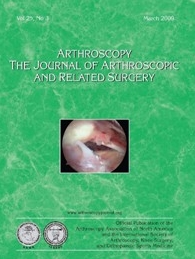
Shoulder & Elbow
Skin preparation with chlorhexidine-alcohol versus povidone-iodine in rotator cuff repair
This report has been verified
by one or more authors of the
original publication.
Arthroscopy. 2018 Apr;34(4):1151-1155
126 patients scheduled for arthroscopic rotator cuff repair were randomized to one of four shoulder skin preparation methods: a solution or 1% chlorhexidine gluconate and 70% isopropyl alcohol with or without an antibacterial adhesive drape, or a solution of povidone-iodine with or without an antibacterial adhesive drape. The purpose of this study was to determine if skin preparation with chlorhexidine plus a drape demonstrated a significantly lower rate of Propionibacterium acnes (P. acnes) suture colonization compared to the other three groups. Compared to the povidone-iodine without drape group, the chlorhexidine plus drape group demonstrated a significantly lower incidence of positive culture identification. Statistical comparisons to the other two groups were not made.
Unlock the full article
Get unlimited access to OrthoEvidence with a free trial
Start TrialCritical appraisals of the latest, high-impact randomized controlled trials and systematic reviews in orthopaedics
Access to OrthoEvidence podcast content, including collaborations with the Journal of Bone and Joint Surgery, interviews with internationally recognized surgeons, and roundtable discussions on orthopaedic news and topics
Subscription to The Pulse, a twice-weekly evidence-based newsletter designed to help you make better clinical decisions
Exclusive access to original content articles, including in-house systematic reviews, and articles on health research methods and hot orthopaedic topics
Or continue reading this full article
Register Now

Subscribe to "The Pulse"
Evidence-Based Orthopaedics direct to your inbox.





































